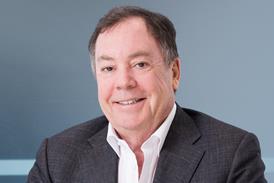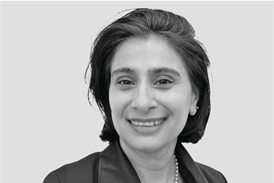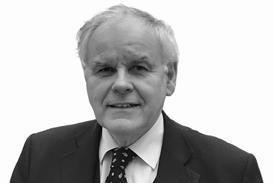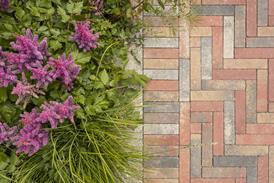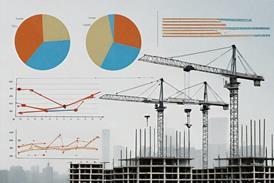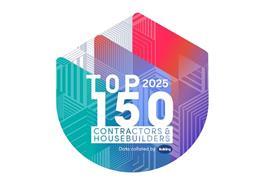"Hello. Thank you for your call. You are being held in a queue and will be answered as soon as possible." Cue Greensleeves.
With large open plan floor areas, housing row upon row of telephone operators, answering a never ending stream of calls, the call centre looks a simple project to build, whatever type of company is to use it on completion. But is that true?
The construction of a call centre for Airtours at the Royal Quays in Newcastle is no small feat. The telephone floor covers 3250 m² on a single level. There are 475 telephone operator positions, arranged into team groups of 12 people. The rest of the building is taken up by training and meeting rooms, a communications room, a reception and areas to service the multitude of operators, including staff dining areas, themed refreshment and vending islands, first aid rooms and toilets.
Services consultant Donald Smith, Seymour & Rooley (DSSR) was appointed by Airtours to draw up a brief and provide the preferred performance design specification and supervision of the design & build project. Construction started in March 1999 with Robert McAlpine & Sons heading up the on-site design & build team. Contractors ABB Steward and Haden Young carried out the electrical and mechanical elements of the project.
The project ran to tight deadlines because Airtours needed its telephone selling facility set up as quickly as possible to catch the summer 2000 holiday trade. To meet Airtours' and the holiday-destined publics' immediate requirements, an existing adjacent office space was fitted out temporarily during the construction of the permanent call centre. It housed 137 operators.
"Sorry for the wait. You are now second in the queue. An operator will be with you shortly."
Back in the permanent centre's site, the m&e installation was in full swing in late August, ready for opening in early 2000.
Because of the nature of the business carried out at this, or any call centre, the general design and specification is not overly complicated. Power to the entire building is supplied from a 1000 kVA substation. A separate switchboard controls the call centre area and associated plant. Back-up comes in the form of a 600 kVA residential type packaged generator. However, there are extensive telecomms and data networks snaking throughout the building. Rows of busbars carry power to floorboxes. Voice and data cabling takes communications to and from pcs and telephones.
"Hello, Dan speaking, how can I help."
Power distribution is under the raised floor. It comprises 63 A busbars and swa cables. Each desk is equipped with a floor box that contains two 13 A sockets plus four telephone/data outlets. The underfloor voice and data cabling is Cat 5E with a utp/lszh sheath. It is routed in designated zones and clipped in bunches to the floor slab. Routes are co-ordinated with the power busbars – a minimum 305 mm parallel spacing.
Paul Livingstone, contracts manager for ABB Steward, says: "Apart from the data and telecomms equipment being installed to Airtours' own specification, the project was similar to other projects that ABB has completed. Call centres tend to follow the same design; Cat 2 lighting, busbars and lots of floorboxes."
The lighting design to the operator areas uses both indirect/direct ceiling mounted fittings. These wash light across the ceiling, providing the optimum operator comfort. Control of the lighting on this floor is via local group switching on columns near each set of desks. Each switch controls the lighting above each team of 12. Illumination in other areas is a mixture of wall mounted uplighters and recessed downlighters, creating different scenes depending on the type of space.
"I'm afraid that your first choice flight is full but I can get you on one leaving at 4 am the following morning."
Security is important. Electronic card readers are located at the entrance and exits of the operator floor, comms room, conference and training rooms, secure stores and safe areas. CCTV and vcr time lapse recording watches over the call centre entrance and car parking areas. There is a visitors' video entry/intercom system and remote door release on the reception, staff carry identity cards and, out of working hours, the alarm system relays via a modem to a remote source.
The mechanical services to the building are as you would expect for a large office. Two 300 kW chillers serve the call centre floor area and two more 40 kW units have been installed to serve the comms room. Some 220 fan coil units are recessed into the ceiling, and an air handling unit provides 12 l/s of fresh air per person.
"So, that is two people to Benidorm, leaving on June the 26th and returning on the 10th of July, OK?"
Temperature control is modular for each group of operators. A building management system controls all of the m&e plant. It also plans maintenance schedules and alerts of any faults via an alarm panel situated at the reception.
When construction was completed on the new building, the equipment from the temporary call centre was transferred to it. This was done over a single night on the eve of the handover. Airtours' new call centre was operational by lunchtime the following day.
"Thankyou for your call and enjoy your holiday. Goodbye."
Source
Electrical and Mechanical Contractor
Credits
Electrical contractor ABB Steward Mechanical contractor Haden Young Main contractor Robert McAlpine & Sons M&E design Donald Smith, Seymour & Rooley (R W Gregory - d&b team) Architect Aukett Associates Client Airtours



